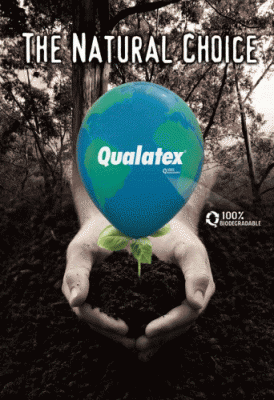Environment

The Environment
Party Splendour uses and recommends ‘Qualatex’ balloons. Qualatex latex balloons are 100% latex. Latex balloons are made from the natural product latex, which is collected from the Hovea tree (rubber tree) that usually grows in plantations in the tropics. Latex harvesting does not hurt the tree. A tree can produce latex for up to 40 years. The latex is treated with curing agents, accelerators, oil and water. Pigments, both organic and inorganic, are added to the latex to provide us with a vast range of colours. These balloons are 100% BIODEGRADABLE thus they are environmentally friendly. In fact the balloon will decompose at the same rate as an oak leaf. Balloons were invented in 1824.
Balloon Releases
In 1999, the Carr government banned the mass release of balloons. NSW is the only Australian state to have adopted this legislation. In NSW, the maximum amount of balloons you are legally allowed to release at one time is 19. The Balloon Artists & Suppliers Association is working hard to reverse the ban. Only natural latex balloons can be used for balloon releases and all components must be bio-degradable including the ribbon. Microfoil (foil) balloons must not be used. When a helium filled latex balloon is released into the atmosphere, it will rise to about 8 kilometers where the air is very cold. It will freeze and shatter falling to the earth as fragments which will subsequently decompose.
Helium Facts
The name Helium comes from the Greek word Helios meaning Sun. Helium is a by-product of LPG extraction. Helium is found in natural gas fields, generally from the USA, Russia and Qatar. Australia imports all of its helium. The balloon industry uses helium that is deemed unusable for medical use. The balloon industry only uses 5%-7% of all helium supply; the majority is used by the medical profession. The balloon industry uses helium as it is lighter than air which gives balloons the ability to float.
